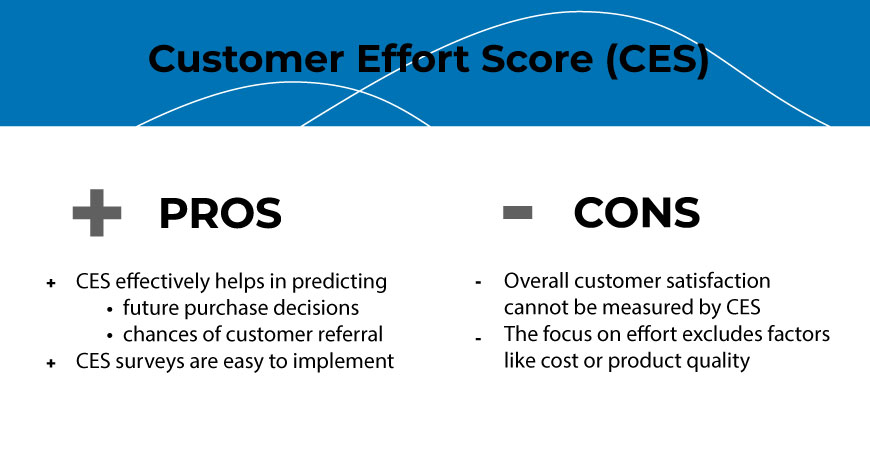What Is Customer Effort Score (CES) And Why Is It Important?

If your daily routine revolves around CX metrics, chances are you have already come across CES or Customer Effort Score. You also probably know that it’s quite important for customer loyalty, but you haven’t incorporated it in your strategy yet. So, where does one start with CES?
What is Customer Effort Score (CES)?
CES is a fairly recent CX metric that, along with NPS (Net Promoter Score) and CSAT (Customer Satisfaction Score), can provide insights on customers’ satisfaction and the quality of their relationship with a brand/store.
The question used to measure CES is along the lines of “How easy was it for you to (e.g. complete your transaction)?” An index from 1 to 5 or from 1 to 7 (1 standing for “very difficult” and 5 or 7 for “very easy”) that measures the effort that customers put into a transaction/interaction with a company. Answers between 5 and 7 are considered a good CES, although an industry benchmark has not been set yet.

So, CES has emerged to shine a light on how easy it is for customers to get involved with a brand or a store. The origins of CES can be traced back to 2010 and a Harvard Business Review article named “Stop Trying to Delight Your Customers”. Its writers presented a case against the established notion that delight leads to loyalty. Their conclusion? The easiest way to increase customer loyalty is not through “wowing your customers,” but rather through making it easier for them to get their job done.
What is the difference between CES and CSAT?
CSAT has evolved to serve as the primary metric for companies that wish to evaluate their customer experience. But what happens when we talk about customer loyalty? Harvard Business Review research has shown that CES provides more accurate future loyalty predictions that CSAT. This is due to the fact that CSAT measures customer satisfaction for a specific interaction/transaction, while CES paints a more comprehensive picture of a customer’s relationship with a brand/store.
But let’s take a look at the numbers… According to Gartner, 96% of customers that report high effort experiences become disloyal, compared to 9% of customers with low effort experiences.
Impressive as these numbers may be, that does not mean that CES has come to take other metrics’ place! On the contrary, metrics synergy is the key to bringing more value to overall CX measuring.
And even though most CX experts see CES as highly valuable in measuring customer service departments’ performance, it has also been proven effective in the self-service sector, where we can also place the process of online shopping.
What are the Pros & Cons of CES?
As is the case with every kind of metric or indicator, CES comes with its own set of pros and cons:

What is the best way to measure CES?
CES may be a relatively fresh metric, but the debate on its measuring has been raging! According to the Corporate Executive Board (CEB) consulting firm, when a client moves from 1 to 5 on the CES index, his loyalty is increased by 22%. But if a customer moves from 5 to 7 on the index, then the loyalty increase is estimated at just 2%. These numbers naturally lead to an important question: do you need to measure averages or study the answers’ distribution when it comes to CES?
And the answer is… distributions, not just averages! Only by factoring both into your analysis, can you be in a position to estimate whether your customers have a difficult or an effortless experience and identify customer segments that you need to focus your energy on, in the hopes of making their interaction with your brand easier.
Measuring CES… in action!
Taking into account your objectives and the type of feedback that you wish to collect, maybe it’s time to consider activating CES and measure your customers’ effort, whether it concerns the navigation of your website/e-shop, the process of completing their transactions or how easy it is for them to use your services/products. Check out how L’Artigiano successfully took advantage of this metric using e-satisfaction’s tools for some much-needed CES inspiration!